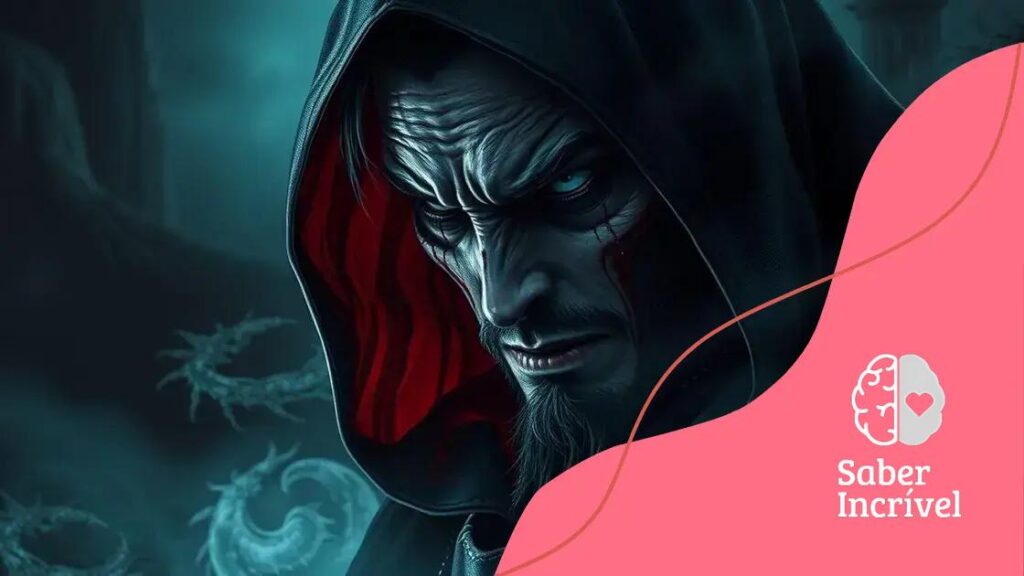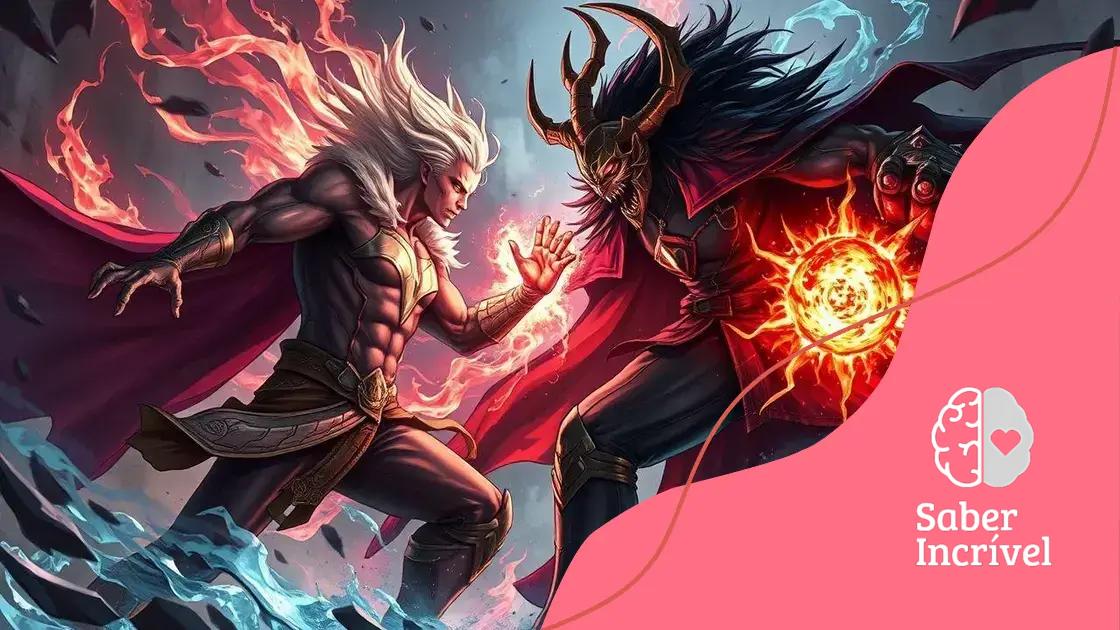When the villain steals the spotlight: queen of tears edition

When the villain steals the spotlight, readers gain unique insights into human nature, moral complexity, and character development, enriching the storytelling experience through a deeper understanding of the antagonist’s motivations and impact on the protagonist.
When the villain steals the spotlight: Queen of Tears Edition offers a fresh take on storytelling. Have you ever wondered how a well-crafted antagonist can transform a narrative? Let’s explore this fascinating shift.
Understanding the villain’s motivations
Understanding the villain’s motivations is essential in grasping the depth of any story. By exploring what drives them, we can better appreciate their role in the narrative. Villains often reflect the darker aspects of humanity, offering rich opportunities for character development.
Key Motivations of Villains
Villains can be complex characters. Their motivations typically stem from various sources. These motivations might include:
- Desire for power: Many villains seek control and dominance over others.
- Revenge: Some are driven by a strong desire to settle scores or avenge past wrongs.
- Fear of loss: Villains may act out of fear, believing that their actions are necessary to protect something they value.
- Manipulation: Often, villains manipulate others to achieve their goals, showcasing their intelligence and cunning.
Moreover, understanding a villain’s background can provide insights into their current actions. For instance, a villain shaped by traumatic events in their past may seek to recreate their experience or prevent similar pain.
It’s also intriguing to consider how a villain’s motivation impacts the protagonist’s journey. Their actions can drive the hero to evolve or make difficult choices, enhancing the story’s tension. The clash of ideologies between the villain and hero can lead to moments of self-discovery, driving the narrative forward.
Empathy Towards Villains
Interestingly, a well-crafted villain engenders a certain degree of empathy. When readers understand their motivations, they often feel conflicted. This complexity adds depth, making the character more relatable despite their evil actions. This alignment can create a powerful bond between the reader and the narrative, enhancing engagement.
In conclusion, recognizing the motivations behind a villain’s actions enriches the reading experience. It allows for a more profound understanding of character dynamics and the impact of conflict in storytelling.
How villains shape the protagonist’s journey
Villains play a crucial role in shaping the protagonist’s journey. Their actions and motivations often act as catalysts, pushing heroes to grow and change. Understanding this dynamic adds depth to the story and allows readers to connect with the characters more profoundly.
The Role of Conflict
At the heart of every great story is conflict. Villains create challenges that test the protagonist’s strength and resolve. These conflicts may arise from direct confrontations or more subtle manipulations. The struggles the hero faces reveal their true nature.
- Motivation: The need to confront the villain often drives the hero to act.
- Growth: Overcoming challenges leads to personal development and greater self-awareness.
- Allies and bonds: Protagonists often rally others to their cause because of the villain’s threat.
- Internal conflict: The presence of a strong antagonist can force heroes to confront their fears and doubts.
Conflict not only enhances the plot but also allows for character exploration. With each encounter, heroes reveal their values, strengths, and weaknesses. For instance, a hero might face ethical decisions influenced by the villain’s actions, leading to critical character growth.
Transformative Relationships
The relationship between the protagonist and antagonist can also be transformative. In many stories, the villain mirrors aspects of the hero, creating a rich narrative layer. This reflection can prompt the hero to examine their beliefs and motivations. For example, when a villain embodies qualities the hero struggles with, it leads to significant internal conflict.
Furthermore, the villain may even serve as a mentor or rival. The protagonist often learns important lessons through their encounters. This complex relationship deepens the plot and enriches character arcs, ultimately enhancing the reader’s experience. As a result, the hero’s journey becomes a pathway of self-discovery, driven by the challenges posed by their adversaries.
The impact of a compelling antagonist

The impact of a compelling antagonist is far-reaching and shapes the entire narrative. A well-developed villain can drive the plot forward and add complexity to the story. Their actions create obstacles for the hero, challenging them in unique ways.
Enhancing the Storyline
A captivating villain enriches the storyline by introducing conflict and tension. Every great story needs conflict, and the antagonist serves as the primary source. This struggle forces characters to confront their fears and evolve throughout the journey. Without a strong adversary, the hero’s growth may seem stagnant.
- Deepening character arcs: A villain’s presence often highlights the hero’s qualities.
- Creating suspense: Readers become invested in the outcome of their battles.
- Driving themes: Antagonists embody key themes in the story, making it more relatable.
- Building empathy: Often, the audience may relate to the villain’s motivations, adding depth.
Through conflict, the protagonist learns important lessons. They often face difficult decisions that reveal their true character. This dynamic relationship creates tension and excitement. It keeps readers turning the pages to see how the hero overcomes adversities posed by the antagonist.
Lessons from Antagonists
Villains can teach readers valuable lessons as well. Their choices, even when misguided, illuminate the consequences of selfish actions. By understanding the **villain’s motivations**, readers see parallels in real life, prompting reflection on their own decisions.
The impact of a villain extends beyond mere opposition; it pushes heroes to reflect on their own values and motivations. A compelling antagonist challenges the hero, leading them on paths of discovery and growth.
Analyzing key scenes in Queen of Tears
Analyzing key scenes in Queen of Tears reveals the intricate layers of storytelling. Each significant moment helps to develop the characters and propel the plot. These scenes often provide crucial insights into the motivations of both the protagonists and antagonists.
Climactic Confrontations
One of the most impactful elements of the narrative is the climactic confrontations between heroes and villains. These battles are not just physical; they are emotional and psychological as well. They can drastically shift the dynamics of the story, leading to profound character development.
- Character Revelation: During these confrontations, characters often reveal their true natures.
- Theme Exploration: These scenes magnify the central themes of the story, such as sacrifice, justice, and redemption.
- Emotional Stakes: High-stakes situations enhance the emotional investment of the reader.
Each confrontation reflects the protagonist’s journey, showing their growth and evolution. For instance, moments of doubt can lead to significant character transformation as they face their fears and decisions directly influenced by the antagonist’s actions.
Turning Points
Turning points in the narrative are also vital for analysis. These moments often redirect the plot and alter character relationships. They can serve as eye-openers for the protagonist, pushing them to take action or rethink strategies.
For example, a betrayal by a close ally can serve as a wake-up call, forcing the hero to confront their vulnerabilities. Such developments often highlight the consequences of past choices and set the stage for the protagonist’s ultimate growth. Readers are left eager to see how these changes affect the resolution of the story.
Moreover, important scenes may be characterized by emotional resonance, prompting readers to reflect on the implications of the characters’ actions. By dissecting these scenes, we gain a better understanding of the motivations driving the narrative and the complexities of the characters involved.
What readers learn from villainous perspectives
What readers learn from villainous perspectives is a fascinating topic. By delving into the minds of villains, readers gain insights that challenge their assumptions. This unique perspective allows for a deeper understanding of morality and humanity.
Insights into Human Nature
Villains often embody the darker aspects of human nature. Their motivations, whether driven by revenge, power, or fear, reveal the complexities of the human psyche. Understanding these motivations can lead readers to question their beliefs about right and wrong. For instance, a villain who seeks revenge for a past trauma may evoke sympathy, prompting readers to consider the circumstances that led to their actions.
- Empathy for the anti-hero: Readers can relate to the struggles and pains of the villain.
- Moral ambiguity: The lines between good and evil become blurred, encouraging critical thinking.
- Lessons in consequence: Villainous actions often demonstrate the repercussions of negative choices.
This exploration of villainous perspectives not only enhances the story but also encourages readers to reflect on their values. Through the lens of a villain, we learn about the importance of compassion and understanding.
Challenging the Hero’s Narrative
Viewing the story from the antagonist’s point of view can also challenge the hero’s narrative. When readers see the world through the eyes of a villain, they may reconsider the hero’s actions. This shift adds depth to character development and plot dynamics, enriching the overall reading experience. It urges readers to explore complex narratives and unavoidable gray areas.
In many cases, a villain’s story arc provides cautionary tales. These narratives highlight the potential outcomes of unchecked ambition or vengeance. By understanding the choices villains make, readers can learn valuable lessons about their own lives and decisions.
FAQ – Understanding Villains in Storytelling
Why should readers consider a villain’s perspective?
Considering a villain’s perspective helps readers understand complex motivations and emotions, adding depth to the narrative.
How do villains influence the hero’s journey?
Villains create obstacles and conflicts that force heroes to grow, learn, and navigate their moral dilemmas.
What can we learn about morality from villains?
Villains often illustrate the consequences of negative choices, prompting important lessons about ethics and empathy.
How do key scenes enhance character development?
Key scenes involving villains reveal crucial aspects of characters, showing their growth and motivations in response to conflict.